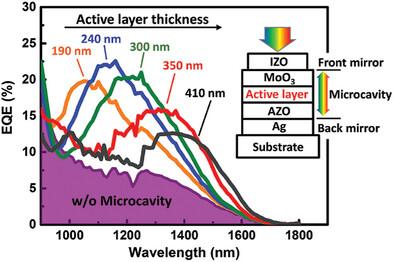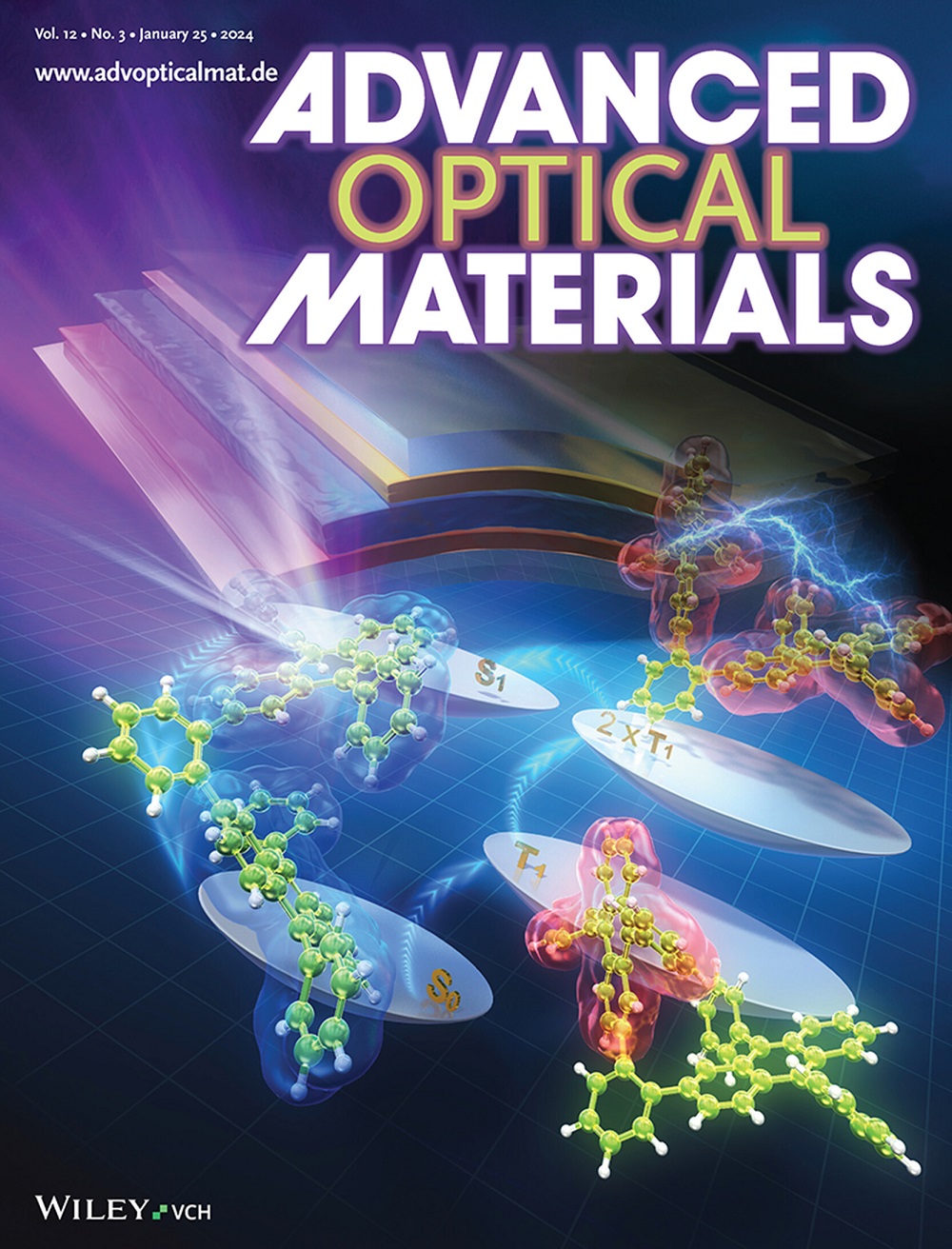通过微腔共振提高顶部发光短波红外有机光电探测器的性能
IF 8
2区 材料科学
Q1 MATERIALS SCIENCE, MULTIDISCIPLINARY
引用次数: 0
摘要
短波红外(SWIR)图像传感器在许多光学应用中具有独特的功能,因此开发下一代材料和光电探测器技术受到广泛关注。有机光电探测器(OPD)因其分子设计的灵活性和可加工性而大有可为。然而,将有机光电探测器与硅读出集成电路(ROIC)集成却面临着诸多挑战,往往导致器件性能被低估,限制了技术进步。为了满足顶部发光 OPD 与 ROIC 集成的要求,并提高外部量子效率(EQE),在 OPD 中引入了光学微腔。通过适当调整光活性层(PAL)和夹层的厚度,可以有效提高 SWIR 区域的 EQE。对光场分布的模拟进一步支持了微腔结构的活性功能。微腔的空间变化使光谱响应从 1000 纳米转移到 1400 纳米,优化后的器件在 1260 纳米波长的 EQE 达到 25.8%。最后,将 OPD 与硅基测试工具集成,结果显示传感性能相当,证明了微腔共振在器件集成方面的巨大潜力。该设计有效地提高了 OPD 与传统 ROIC 的集成度,推动了基于 SWIR 的有机图像传感器技术进一步走向商业化。本文章由计算机程序翻译,如有差异,请以英文原文为准。

Enhancing Performance in Top‐Illuminated Shortwave Infrared Organic Photodetectors via Microcavity Resonance
Shortwave infrared (SWIR) image sensors have unique functions in many optical applications, leading to widespread attention in developing next‐generation materials and photodetector technologies. Organic photodetectors (OPDs) are highly promising due to their flexibility in molecular design and processability. However, integrating OPDs with silicon readout integrated circuits (ROICs) poses numerous challenges, often resulting in underestimated device performance and limiting technological progress. To address the requirements of integrating top‐illuminated OPD with ROICs and to enhance the external quantum efficiency (EQE), optical microcavities are introduced into the OPDs. The EQE in the SWIR region can be effectively enhanced by properly adjusting the thicknesses of the photoactive layer (PAL) and interlayers. Simulations of the optical field distribution further support the active functions of the microcavity structure. The spatial variation of the microcavities allows the spectral response to shift from 1000 to 1400 nm, and the optimized device achieves an EQE of 25.8% at 1260 nm. Finally, the OPDs are integrated with a silicon‐based test kit, and the results reveal comparable sensing performance, demonstrating the high potential of microcavity resonance for device integration. This design effectively improves the integration of OPDs with traditional ROICs and advances SWIR‐based organic image sensor technology further toward commercialization.
求助全文
通过发布文献求助,成功后即可免费获取论文全文。
去求助
来源期刊

Advanced Optical Materials
MATERIALS SCIENCE, MULTIDISCIPLINARY-OPTICS
CiteScore
13.70
自引率
6.70%
发文量
883
审稿时长
1.5 months
期刊介绍:
Advanced Optical Materials, part of the esteemed Advanced portfolio, is a unique materials science journal concentrating on all facets of light-matter interactions. For over a decade, it has been the preferred optical materials journal for significant discoveries in photonics, plasmonics, metamaterials, and more. The Advanced portfolio from Wiley is a collection of globally respected, high-impact journals that disseminate the best science from established and emerging researchers, aiding them in fulfilling their mission and amplifying the reach of their scientific discoveries.
 求助内容:
求助内容: 应助结果提醒方式:
应助结果提醒方式:


